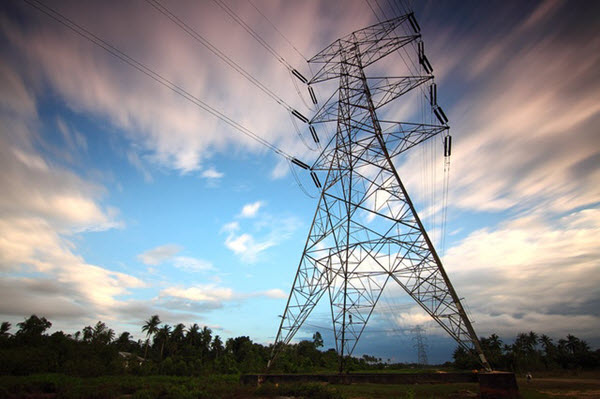Blockchain And The New Power Grid
By Brian Wallace
October 1, 2018 • Fact checked by Dumb Little Man

For the majority of consumers, being environmentally conscious is second nature. Between switching the lights off in empty rooms, forgoing the plastic straw, and bringing reusable bags for grocery shopping, we do our part in every way we can.
Globally, 8 in 10 people believe that the world’s power source should come from clean, renewable sources. As environmental and digital technologies grow, the prospect of a planet powered by clean energy is a very real possibility. And yet, 31.8% of our energy consumption is supplied by natural gas and just 12.7% from renewables.
Using current technology, solar energy systems employ a number of photovoltaic (PV) cells that are enough to power a home. Just 1-gigawatt-hour of solar power generation prevents the creation of 690 metric tons of CO2 in the environment.
See Also: Solar Panels For Home: Do They Make A Great Investment?
Wind electrical systems are cost-effective options for individuals in windy areas. They can generate electricity to power homes or pump water on farms.
Microhydropower uses a 10-kilowatt system appropriate for powering a large home, small farm or even a resort.
More than one in four people believe that it is the people who should take the lead on energy issues, the main focus being reducing carbon emissions and addressing the looming dangers of climate change.
Why Going Green Isn’t For Everyone
Installing solar panels or wind power systems for homes to generate their own electricity, while sustainable, is still cost prohibitive to the average consumer. Though it just takes a handful of panels to supply power to a house or small office, creating power at home in an effort to go green is simply not realistic.
From there, we have no other choice but to give our business to the local power companies. One study even found that your utility company’s rate structure can diminish the value of installing a solar power system, decreasing the return on an already large investment.
An Outdated System
In the US, 35% of CO2 emissions are from electric power generation alone. It’s the very same power that feeds into our homes and businesses. Utility-structured electricity prevents consumers from choosing their power source.
In developed countries, regulated markets allow for a generally steady and uninterrupted power supply. However, there isn’t much incentive for power companies to go green.
In undeveloped countries, there are often challenges to getting power to those in rural areas while monopolies can foster corruption. Common issues throughout the world’s power supply include:
- Power corporations maintain high prices, even in spite of steady profit margins
- Big utilities use their power to gain excess profits
- Free “certificates” are used to market coal or other unsustainable energy sources as green energy. This contributes to confusion and misconception among consumers
Blockchain Power Grid: Giving Choices To Consumers
A concept known as the blockchain smart grid opens up the potential foundation for a consumer-based energy market. Drawing on the same decentralized tech behind cryptocurrency, similar principles of operation can be applied to the way we buy, sell, and use energy.
Networks capable of tracking and connecting electricity usage can finally give consumers the option to ethically choose where their power is coming from at fair rates.
Computer modeling forecasts demand increases efficiency and lowers costs.
Small producers, like homes with solar panels, meet excess demand with low-cost energy.
Encouraging peer-to-peer transactions of green energy, the potential consumer-based market will operate as an energy stock exchange with consumers purchasing energy at variable rates. Instead of standard rates set by central agencies, the cost will depend on the market itself.
Eventually, the demand for renewables will grow once consumers can see and choose the sources for their homes’ electricity. This will further blockchain smart grid as an accessible and responsible method of energy use.
Who generates more power than they need will have the option to:
- Store self-generated power in batteries
- Share excess energy with others
- Sell the extra power back into the grid
Today, if you want to sell excess electricity to others, you must become your own utility company. You need to build your own network and infrastructure or negotiate terms with power companies. Though current utility structure paints a grim picture of reality as a capitalist machine concerned with short-term profits over long-term survival, there is an option to give the power back to the people.
Take a look at this infographic for more on the state of renewable energy and how blockchain can give it a much-needed jumpstart.
Brian Wallace
Brian Wallace is the Founder and President of NowSourcing, an industry leading infographic design agency based in Louisville, KY and Cincinnati, OH which works with companies that range from startups to Fortune 500s. Brian also runs #LinkedInLocal events nationwide, and hosts the Next Action Podcast. Brian has been named a Google Small Business Advisor for 2016-present and joined the SXSW Advisory Board in 2019.



